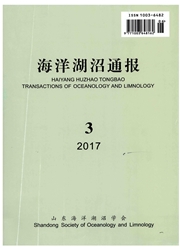

 中文摘要:
中文摘要:
从枸杞岛海藻场和对照点贻贝场分别采取表层及底层水样,利用细菌通用引物,提取样品总DNA进行聚合酶链式反应(PcR)扩增,采用16SrDNA文库技术,对其细菌群落进行鉴定和分析。结果表明,海藻场表层和底层细菌群落分为5和6个门,贻贝场表层和底层细菌群落分为3和4个门,海藻场中细菌分类门数多于贻贝场内,优势菌均为变形细菌门,分别占克隆文库的比例为40.7%、50%、59.1%和48.1%、r变形菌纲为变形细菌门的优势亚群,各个文库中均含有许多未确定其分类的序列,即含有许多未被认知的微生物类群。变形菌门、厚壁菌门和放线菌门为所有水样共有,但在水层垂直分布及不同地理位置间存在较大差异。不同功能类群可能与其特殊生境密切相关。
 英文摘要:
英文摘要:
The surface and bottom water samples were taken from the seaweed beds of Gouqi Island and the mussel culture area as the control points. Total DNA was extracted from sam-ples with the aid of bacterial universal primer and amplified by means of PCR and its product was analyzed with the 16SrDNA clone library technique to identify and analysis of the bacte-rial communities. The results indicated that the surface and bottom waters of seaweed beds contained five and six bacterial phyla and the surface and bottom waters of mussel culture ar- ea contained three and four bacterial phyla. The number of bacterial phyla in the seaweed beds was greater than the mussel culture area, and phylogenetic analysis showed that the Proteobacteria was the dominant group in the water samples, proportion in the four clone li-braries were 40.7%, 50%, 59.1%, and 48.1%. Gammaproteobacteria was dominant class. There were lots of sequences whose class status were undetermined, so it contained many microorganisms which were not cognitive. Proteobacteria Firmicutes and Actinobaceria were contained in all the water samples. However, there were big differences between the vertical distribution of water levels and different locations, and different function microbial groups might be closely related to their special habitats.
 同期刊论文项目
同期刊论文项目
 同项目期刊论文
同项目期刊论文
 期刊信息
期刊信息
